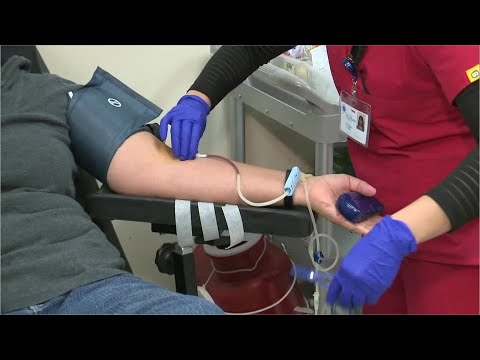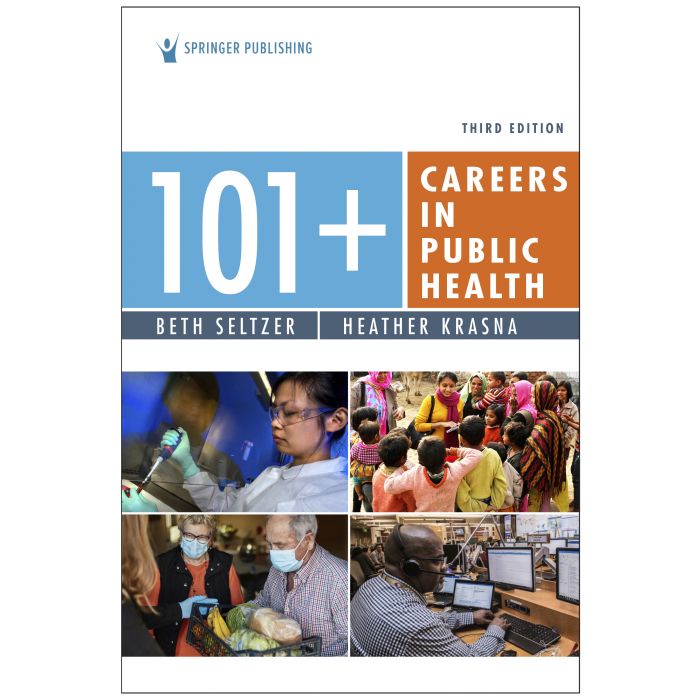
Northside Health Careers High is a magnet high school in San Antonio's Northside Independent Schools District. This school is for those who are interested in a profession related to medicine, nursing, and physical therapy. Students are drawn to the school from all over Bexar County and Hondo, Texas, to earn their diplomas. Below are some factors to consider when choosing a school for high-level health careers. The article also includes cost information and location.
Curriculum
The Health Occupations Students of America Organization (HOSA) is an organization that combines the standards for core academic subjects and career technical education for the health and medical sectors. Its curriculum focuses primarily on health and the medical professions, in a handson environment. The U.S. Department of Education endorses the HCA as a way for students to prepare for many different careers. Here are some of these benefits of taking an HCA program.
High school students should be prepared to go to college for a career in the medical field. Advanced placement courses are available and can lead to college credit. Although they may not seem related to a career, preparatory coursework is essential for student success in college. Preparatory courses like English are also essential for developing critical thinking and communication skills. It's important that you prepare yourself for a successful career in the health professions classes you select.
Students
Northside Health Careers High School is a magnet school in the San Antonio's Northside Independent School District. Students come from all around Bexar County and even from Hondo in Texas. The school's reputation for offering health professions courses attracts students looking to enter the health care industry. But is it right for every student? However, it may be an option for you.

According to the most current data, Health Careers High School's enrollment is 905 students. It is part Northside ISD. With a student-teacher ratio 34.6:1, its enrollment is higher than the state average. High-risk students enrolled in health-care programmes are considered high-risk. The school also has a low dropout rate (0.0%). It ranks among the top 30% of California schools and has a high rate of math- and reading proficiency.
Cost
There are many health career options, each with different education requirements. Some require eight-to-13 years of specialized education while others are trained for 18-24 months. The majority of training programs combine classroom lectures with hands-on learning experiences like time in hospitals, community clinics, or labs. Before making a decision on which training program to pursue, people who aren’t certain what they want in their career field should investigate the costs involved.
Health careers are highly sought-after, and most of these positions enjoy excellent job security. According to U.S. Department of Labor statistics, the healthcare field is one of most rapidly growing career fields. There are many excellent career options in the health field, with good pay and great job prospects. These include:
Location
High School for Health Careers and Sciences, San Antonio, Texas. It is just a short distance from the John C. Holmgreen Center (Northside Children's Center) and the John C. Holmgreen Center. The school is situated one mile south of San Antonio's University of Texas Health Science Center. It is a public academic health science center. It ranks 17th nationally and is the first in the state.

This school established the Health Careers pathway in 2015. Since then, it has added many classes. Instructor Dr. Olga Orlova provides a hands-on learning environment to her students, preparing them for entry-level positions in healthcare settings. You can choose from courses such as Introduction and Emergency Nursing, Radiology, Pharmacy, Pharmacy, or Laboratory. After graduation, students can choose which courses they wish to pursue.
FAQ
How can I tell what is good for me?
You need to listen to your body. Your body knows best when it comes to how much exercise, food, and rest you need. It's important to pay attention to your body so you don't overdo things. Take care of your body and make sure that you're staying healthy.
What can I do to boost my immune system?
The human body is made up of trillions and trillions of cells. These cells work together to form organs and tissues that perform specific functions. If one cell dies, a new cell takes its place. Chemical signals, called hormones, allow cells to communicate with each other. Hormones regulate all bodily processes, from growth and development to metabolism and immunity.
Hormones are chemical substances that glands secrete throughout the body. They travel through our bloodstream and act as messengers, controlling how our bodies function. Some hormones come from the body and others from outside.
When a hormone-producing gland releases their contents into the bloodstream, hormone production begins. Once hormones become active, they move throughout the body until reaching their target organ. Some hormones are only active for a brief time. Other hormones can remain active longer, and they continue to affect the body's functionality even after leaving the bloodstream.
Some hormones are produced in large quantities. Others are produced in smaller amounts.
Some hormones are produced at certain times during life. The production of estrogen can occur during puberty and pregnancy, as well as menopause and old age. Estrogen assists women with breast development, bone density, and osteoporosis prevention. Estrogen promotes hair growth, and skin stays soft and smooth.
What should I eat?
Consume lots of fruits, vegetables. They provide vitamins and minerals to keep your immune system strong. They are also rich in fiber, which is good for digestion and makes fruits and vegetables filling. You should eat at least five servings per day of fruit or veg.
Water is essential for your body. Water helps flush toxins out of your body and makes you feel fuller between meals. Drink about eight glasses each day.
Refined grains should be replaced with whole grains. Whole grains contain all of their nutrients, including B vitamins and iron. Refined grains lack some nutrition.
Sugary drinks should be avoided. Sugary drinks can be a source of empty calories, which can lead to obesity. Instead, opt for water, milk, or unsweetened tea.
Avoid fast food. Fast food lacks nutritional value. It may taste great but it won't give you the energy you need to function properly. Use healthier options, such as soups, sandwiches, salads, and pasta.
Limit alcohol intake. You can reduce your intake of alcohol by limiting the amount of empty calories. Limit yourself to no more than two alcoholic beverages a week.
Reduce your consumption of red meat. Red meats are high-in saturated fat and cholesterol. Choose lean cuts such as beef, pork and lamb, chicken, fish, or turkey.
How often do I need to exercise?
Exercise is essential for maintaining a healthy lifestyle. However, there isn't a set amount of time you must spend working out. The key is finding something you enjoy and stick with it.
If you work out three times a week, then aim to complete 20-30 minutes of moderate intensity physical activity. Moderate intensity means you'll still be breathing hard after you've finished. This type workout burns about 300 calories.
Walk for at least 10 minutes four days a weeks if you prefer walking. Walking is low in impact and easy for your joints.
Jogging for 15 minutes three days a week is a good option if you prefer to run. Running can help you burn calories and to tone your muscles.
Begin slowly if your are not used to working out. You can start with only 5 minutes per week of cardio. Gradually increase duration until you achieve your goal.
What's the best diet?
There are many factors that influence the best diet, including your gender, age, weight, health condition, lifestyle, and personal preferences. You should also consider how much energy your exercise consumes, whether you like low-calorie or high-calorie foods, and what you enjoy in terms of eating fruits and veggies.
Intermittent fasting is a good option if you're trying to lose weight. Intermittent Fasting means that you eat only specific meals throughout your day and not three large meals. This may be a better option than traditional diets with daily calorie counts.
Some studies suggest that intermittent fasting may improve insulin sensitivity and reduce inflammation, which can lead to improved blood sugar levels and reduced risk of diabetes. Some research also suggests that intermittent fasting might promote fat loss, and improve overall body composition.
How does an antibiotic work?
Antibiotics can be used to kill bacteria. To treat bacterial infections, antibiotics are used. There are many different types of antibiotics. Some are given orally, while some are injected. Other antibiotics are applied topically.
People who have been exposed are often given antibiotics. If someone has chicken pox, they might need to take an oral antibiotic in order to prevent shingles. For those with strep-thorphritis, an injection of penicillin could be administered to prevent them from getting pneumonia.
If antibiotics are to be administered to children, they must be prescribed by a doctor. Children are at greater risk than adults for developing serious side effects from taking antibiotics.
Diarrhea being the most common side effect of antibiotics. Other possible side effects include diarrhea, nausea and vomiting, allergy reactions, dizziness, dizziness, stomach cramps, nausea, vomiting or allergic reactions. Most of these symptoms disappear after the treatment is completed.
Statistics
- The Dietary Guidelines for Americans recommend keeping added sugar intake below 10% of your daily calorie intake, while the World Health Organization recommends slashing added sugars to 5% or less of your daily calories for optimal health (59Trusted (healthline.com)
- WHO recommends reducing saturated fats to less than 10% of total energy intake; reducing trans-fats to less than 1% of total energy intake; and replacing both saturated fats and trans-fats to unsaturated fats. (who.int)
- This article received 11 testimonials and 86% of readers who voted found it helpful, earning it our reader-approved status. (wikihow.com)
- According to the Physical Activity Guidelines for Americans, we should strive for at least 150 minutes of moderate intensity activity each week (54Trusted Source Smoking, harmful use of drugs, and alcohol abuse can all seriously negatively affect your health. (healthline.com)
External Links
How To
What does the term "vitamins" mean?
Vitamins are organic compounds naturally found in food. Vitamins are essential for our bodies to absorb nutrients from the foods we eat. Vitamins are not made by the body, so they must be obtained through food.
There are two types: water-soluble and fat-soluble vitamins. Water-soluble vitamins dissolve quickly in water. Examples include vitamin C,B1 (thiamine), B2 (riboflavin), B3 (niacin), B6 (pyridoxine), folic acid, biotin, pantothenic acid, and choline. Fat-soluble vitamins are stored in the liver, fatty tissue and kidneys. Vitamin D, E, K and A are some examples.
Vitamins can be classified according to biological activity. There are eight main groups of vitamins.
-
A - vital for healthy growth.
-
C - vital for proper nerve function, and energy production.
-
D – Essential for healthy teeth, bones and joints
-
E is required for good vision and reproduction.
-
K - Required for healthy nerves and muscles.
-
P - vital for building strong bones andteeth.
-
Q - Aids in digestion and absorption.
-
R - Required for red blood cell production
The recommended daily allowance for vitamins (RDA) varies based on gender, age, and physical conditions. The U.S. Food and Drug Administration, (FDA), sets the RDA value.
For example, the RDA for vitamin A is 400 micrograms per dayfor adults 19 years or older. However, pregnant women need 600 micrograms per day because it is important for fetal development. Children ages 1-8 require 900 micrograms per day. Infants under one year of age require 700 micrograms per day, but this amount decreases to 500 micrograms per day between 9 months and 12 months of age.
Children aged between 1-18 years require 800 micrograms of sugar per day, while overweight children need 1000 micrograms. Children who are underweight receive 1200 micrograms every day to meet their nutritional requirements.
Children between 4 and 8 years old with anemia will need 2200 micrograms daily of vitamin C.
2000 micrograms is the minimum daily intake for adults over 50 years old to maintain good health. Mothers who are pregnant, nursing, or have a high nutrient need will require 3000 micrograms a day.
Adults over 70 need 1500 micrograms daily, as they lose 10% of their muscle every ten years.
Women who are pregnant, nursing or breastfeeding need more than the RDA. Pregnant woman need 4000 micrograms daily in pregnancy, and 2500 per day after childbirth. Breastfeeding moms need 5000 micrograms each day when breastmilk production occurs.